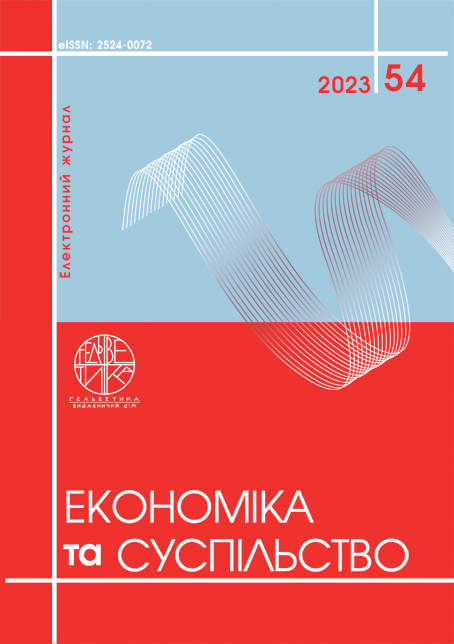ANALYSIS OF THE PROBLEMS OF THE ORGANIZATION OF THE TRANSPORTATION OF DAIRY RAW MATERIALS
Abstract
The use of the logistics approach in production structures allows to reduce the total costs of the entire logistics chain, increase the competitiveness of the enterprise, and expand the sales markets of its products. This is especially relevant for enterprises in the food industry, including the dairy industry, since they have extensive relationships with many suppliers of raw materials, a multi-channel branched sales network and produce a wide range of finished products. At the same time, they constantly solve transport tasks aimed at reducing the transport component of the product price, coordinate transport and production rhythms with the aim of reducing the level of stocks in warehouses, equalizing production capacity. The role of transport in the production of dairy products is growing every year, the specific weight of transport costs in general is increasing in their volume, and the transport sector plays a major role in the competition for dairy product sales markets. Without transport connections, it is not possible to build supply chains of both raw and processed milk. Thus, powerful transport and logistics systems are created, which must be managed in an operational mode. The task of managing such systems in the dairy industry is especially acute, since the entire cycle from the supply of raw materials to production, and then to the sale of products, has a limited time period. In addition, the physicochemical properties of milk and other components, their transportation temperature regime, uneven supply of raw materials and finished products over time, and other factors are taken into account when developing a scheme for the delivery of raw materials and the sale of finished products. the task of logistics is to ensure at the state level the effective implementation of all components of a single transport-technological "chain" from the producer of dairy raw materials to the final consumer of finished products: obtaining dairy raw materials - milk processing - sale of the obtained products. The development of logistics contributes to the achievement of competitive advantages both in production - through the rational use of available capacities, reduction of production stocks, cooperation, integration, etc., and in distribution - thanks to the improvement of trade service, the selection of the optimal distribution channel, and more complete satisfaction of needs.
References
Meyer А. Milk run Design. Definitions, Concepts and Solution approaches. Dissertation, Karlsruher institut fur technologie (Kit). 2015. 257 p.
Boysen N., Emde S., Hoeck M., Kauderer M. Part logistics in the automotive industry: Decision problems, literature review and research agenda. European Journal of Operational Research. 2015. Vol. 242(1). рр. 107¬120.
Miemczyk J., Holweg M. Building cars to customer order - what does it mean for inbound logistics operations? Journal of Business Logistics. 2004. Vol. 25(2). рр. 171¬197.
Krajewska M.A. Potentials for e-ciency increase in modern freight forwarding. Dissertation Universität Bremen: Gabler-Verlag. 2008. 139 p.
Kempkes J.P., Koberstein A., Suhl L. A resource based mixed integer modelling approach for integrated operational logistics planning. Advanced Manufacturing and Sustainable Logistics. 2010. рр. 281¬294.
Quelin B., Duhamel F. Bringing together strategic outsourcing and corporate strategy: Outsourcing motives and risks. European management journal. 2003. Vol. 21(5). рр. 647¬661.
Hsiao H., Kemp R.G., Van der Vorst J., Omta S. A classification of logistic outsourcing levels and their impact on service performance: Evidence from the food processing industry. International Journal of Production Economics. 2010. Vol. 124 (1). рр. 75¬86.
Heckmann I. Towards Supply Chain Risk Analytics-Fundamentals, Simulation, Optimization. Karlsruher Institut fur Technologie: Springer Gabler. 2016. 436 p.
Smith M.E., Buddress L. Supply chain management: borrowing our way to a discipline. International Journal of Services and Operations Management. 2005. Vol. 1(4). рр. 305¬319.
Bertodo R. Some developing trends in manufacturer-supplier relationships. International Journal of Manufacturing Technology and Management. 2002. Vol. 4 (1–2). рр. 21¬35.
Meyer A. (2015). Milk run Design. Definitions, Concepts and Solution approaches. Dissertation, Karlsruher institut fur technologie (Kit).
Boysen N., Emde S., Hoeck M., Kauderer M. (2015). Part logistics in the automotive industry: Decision problems, literature review and research agenda. European Journal of Operational Research. Vol. 242(1). рр. 107¬120.
Miemczyk J., Holweg M. (2004). Building cars to customer order - what does it mean for inbound logistics operations? Journal of Business Logistics. Vol. 25(2). рр. 171¬197.
Krajewska M.A. (2008). Potentials for e-ciency increase in modern freight forwarding. Dissertation Universität Bremen: Gabler-Verlag.
Kempkes J.P., Koberstein A., Suhl L. (2010). A resource based mixed integer modelling approach for integrated operational logistics planning. Advanced Manufacturing and Sustainable Logistics. рр. 281¬294.
Quelin B., Duhamel F. (2003). Bringing together strategic outsourcing and corporate strategy: Outsourcing motives and risks. European management journal. Vol. 21(5). рр. 647¬661
Hsiao H., Kemp R.G., Van der Vorst J., Omta S. (2010). A classification of logistic outsourcing levels and their impact on service performance: Evidence from the food processing industry. International Journal of Production Economics. Vol. 124 (1). рр. 75¬86
Heckmann I. (2016). Towards Supply Chain Risk Analytics-Fundamentals, Simulation, Optimization. Karlsruher Institut fur Technologie: Springer Gabler.
Smith M.E., Buddress L. (2005). Supply chain management: borrowing our way to a discipline. International Journal of Services and Operations Management. Vol. 1(4). рр. 305¬319.
Bertodo R. (2002). Some developing trends in manufacturer-supplier relationships. International Journal of Manufacturing Technology and Management. Vol. 4 (1–2). рр. 21¬35.

This work is licensed under a Creative Commons Attribution 4.0 International License.


